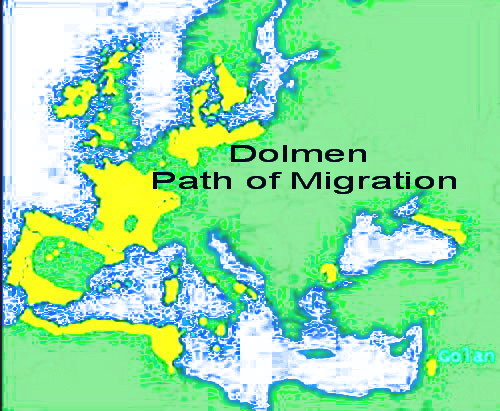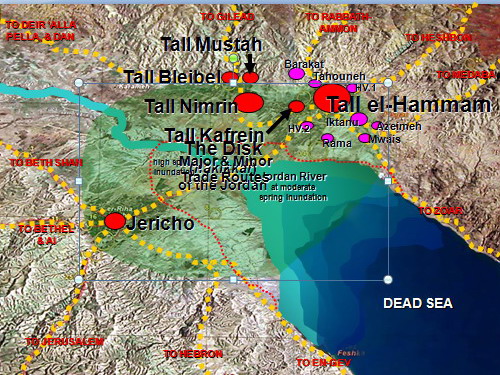The Damiyah Dolmen field (alternative name Ala-Safat, Al-Damiyah): It contains bronze age burial chambers (Dolmen), rock-cut tombs, and other structures in a large field near the town of Deir Alla and the village Damiyah.
This region is probably in the territory of the Tribe of Gad.
Deir Alla (identified as the Biblical Succoth) is the place where the inscription speaking of Balaam and Netser was found. This inscription has been important in our researches concerning the origins of Christianity and possible Biblical references to it as explained in our work "Ephraim. The Gentile Children of Israel", 1995, 2001. The inscription was dated to ca. 750 BCE and the dolmens are also probably from around the same period, or a bit before.
In the pciture below notice the square window shapes on the dolmens. These remind us of Dolmens from the Caucasus and western Europe.
|














